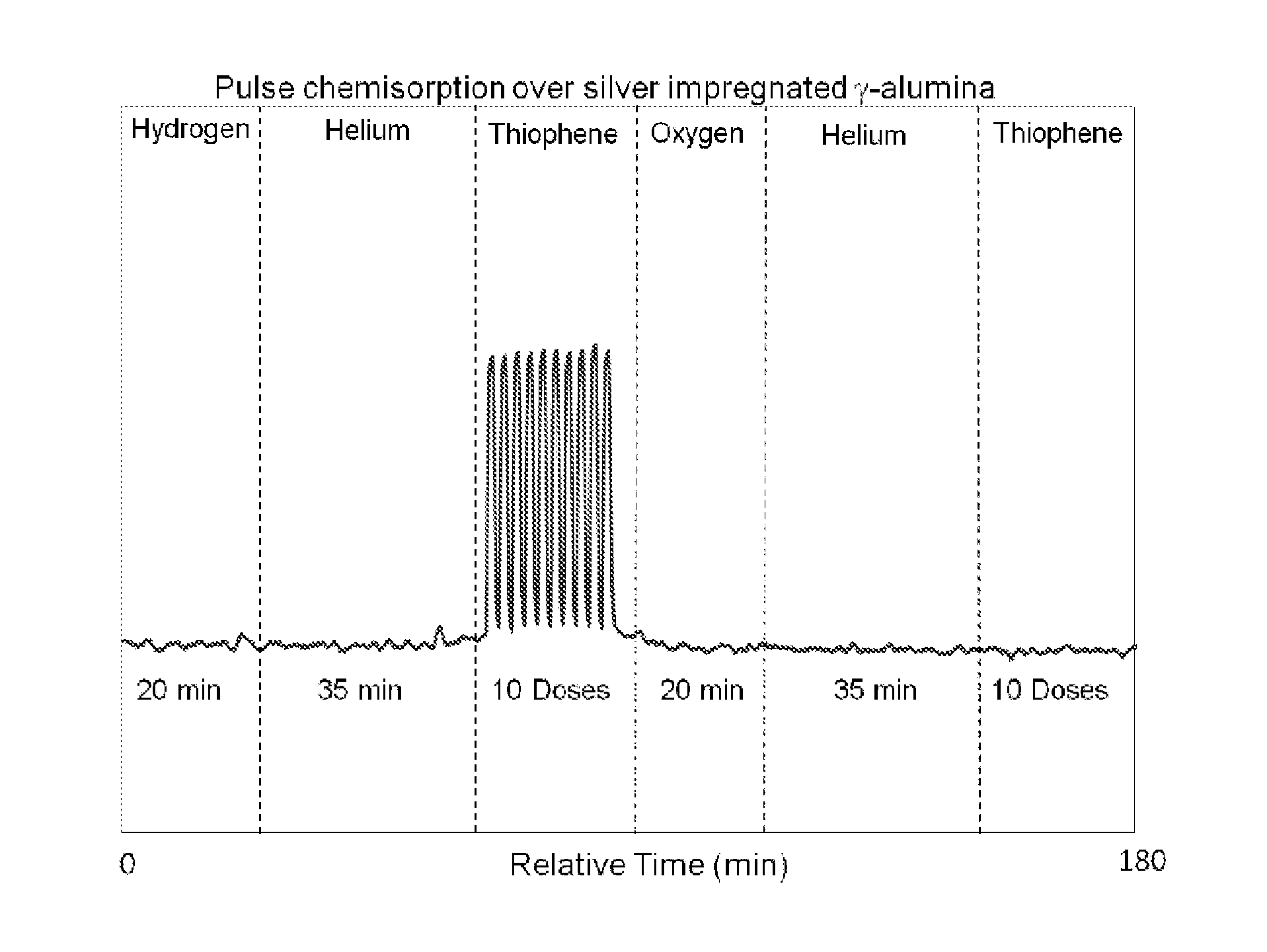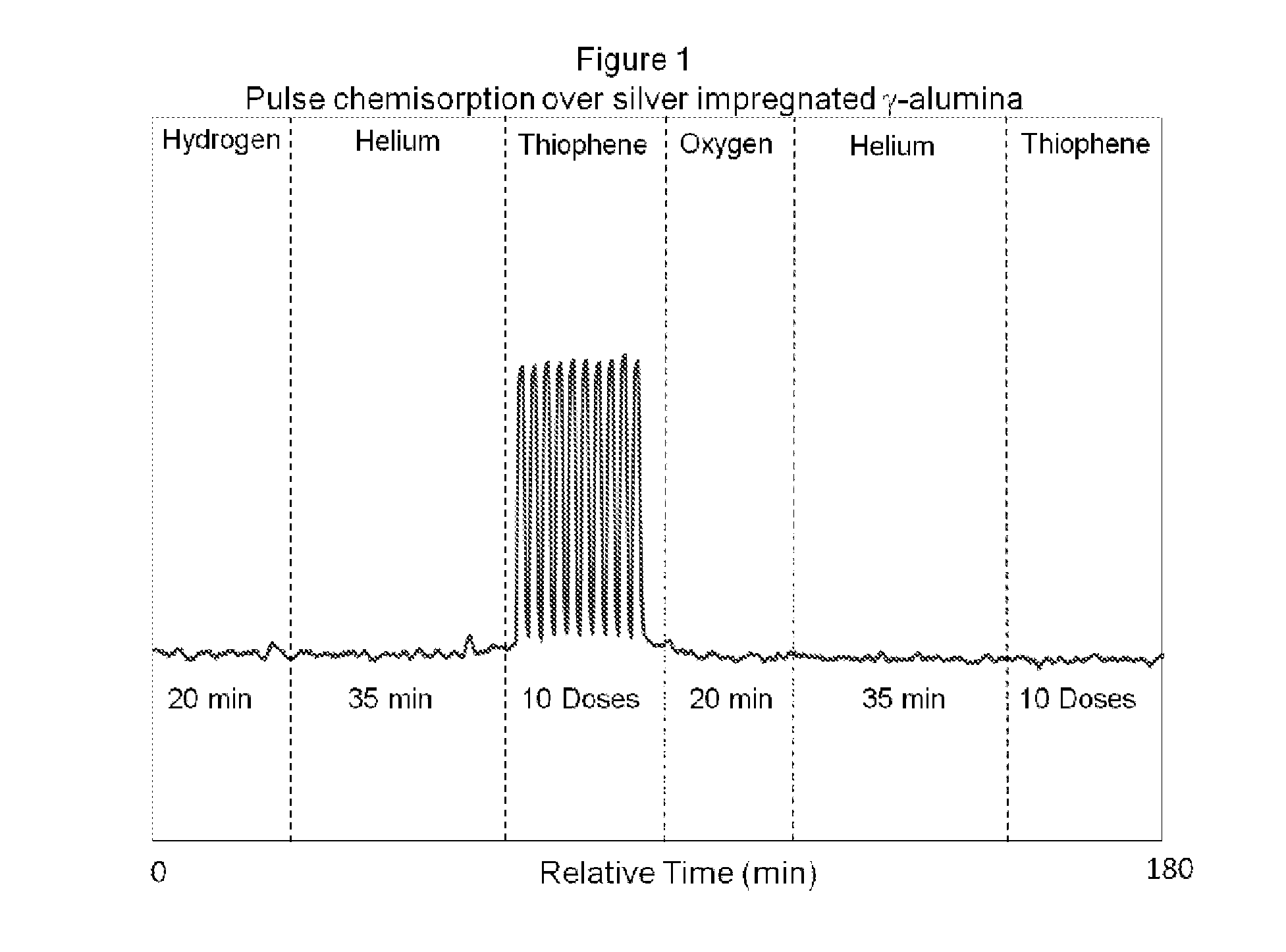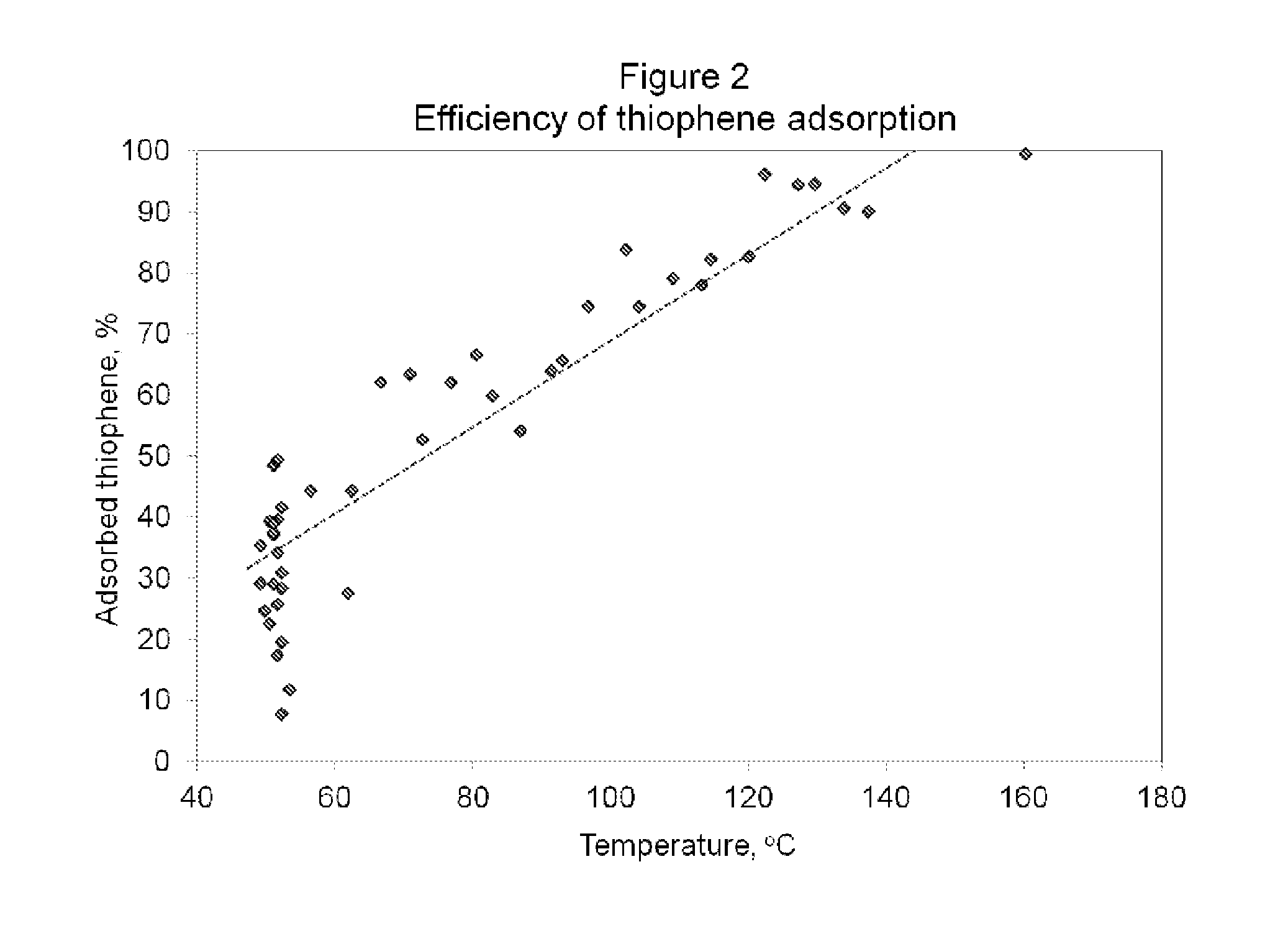Epoxidation process
a technology of ethylene oxide and ethylene oxide, which is applied in the direction of catalyst regeneration/reactivation, physical/chemical process catalysts, bulk chemical production, etc., can solve the problems of high uneconomical, low economic value, and inability to fully understand the use of ethylene oxide as an industrial chemical, etc., and achieve the effect of promoting the amount of rhenium
- Summary
- Abstract
- Description
- Claims
- Application Information
AI Technical Summary
Benefits of technology
Problems solved by technology
Method used
Image
Examples
example 1
[0065]A pulsed chemisorption experiment was employed in the present invention to show the dependence of oxygen to activate and reactivate the sulfur adsorption capacity of refractory compounds by the adsorbent material disclosed.
[0066]About 2 grams of the desulfurization catalyst prepared as described previously (5% silver deposited on a gamma alumina carrier having a surface area of approximately 200 m2 / g) but not oxidized with an oxidizing gas was loaded into a test cell and heated to 255° C. Once the temperature was stabilized under an inert gas (in this case, helium) the sample was exposed to a reducing gas, hydrogen (5% in ultra high purity argon) for 20 minutes. A 35 minute helium purge was performed to ensure any physisorbed hydrogen was removed. After clearing the sample and sample chamber with helium gas, thiophene was pulsed over the sample. The sample was exposed to ten pulses of 1 cc volume of 21 ppm of thiophene, with the balance being helium. The thiophene pulses demon...
example 2
[0067]A pulsed chemisorption experiment was employed to show how the efficiency of the desulfurization catalyst is dependent on temperature. The figure also illustrates the optimum range of operating temperatures. The same desulfurization catalyst as in Example 1 was used. And the experiment was conducted with the same test cell and operating protocol as in Example 1. However, in this experiment, the desulfurization catalyst was first heated to 50° C. in a helium atmosphere and held at temperature for 15 minutes. During this period, thiophene was introduced into the chamber containing the desulfurization catalyst with a constant flow. The gas consisted of 21 ppm thiophene in an ultra high purity helium balance. As it can be seen in FIG. 2, the material demonstrated a slow uptake of thiophene, even at 50° C., with a limited efficiency of 30% of the total concentration. The sample was then heated at a ramp rate of 10° per minute, from 50° C. to 150° C. and 46 measurements of the adsor...
PUM
| Property | Measurement | Unit |
|---|---|---|
| temperature | aaaaa | aaaaa |
| pressure | aaaaa | aaaaa |
| wt. % | aaaaa | aaaaa |
Abstract
Description
Claims
Application Information
 Login to View More
Login to View More - R&D
- Intellectual Property
- Life Sciences
- Materials
- Tech Scout
- Unparalleled Data Quality
- Higher Quality Content
- 60% Fewer Hallucinations
Browse by: Latest US Patents, China's latest patents, Technical Efficacy Thesaurus, Application Domain, Technology Topic, Popular Technical Reports.
© 2025 PatSnap. All rights reserved.Legal|Privacy policy|Modern Slavery Act Transparency Statement|Sitemap|About US| Contact US: help@patsnap.com



